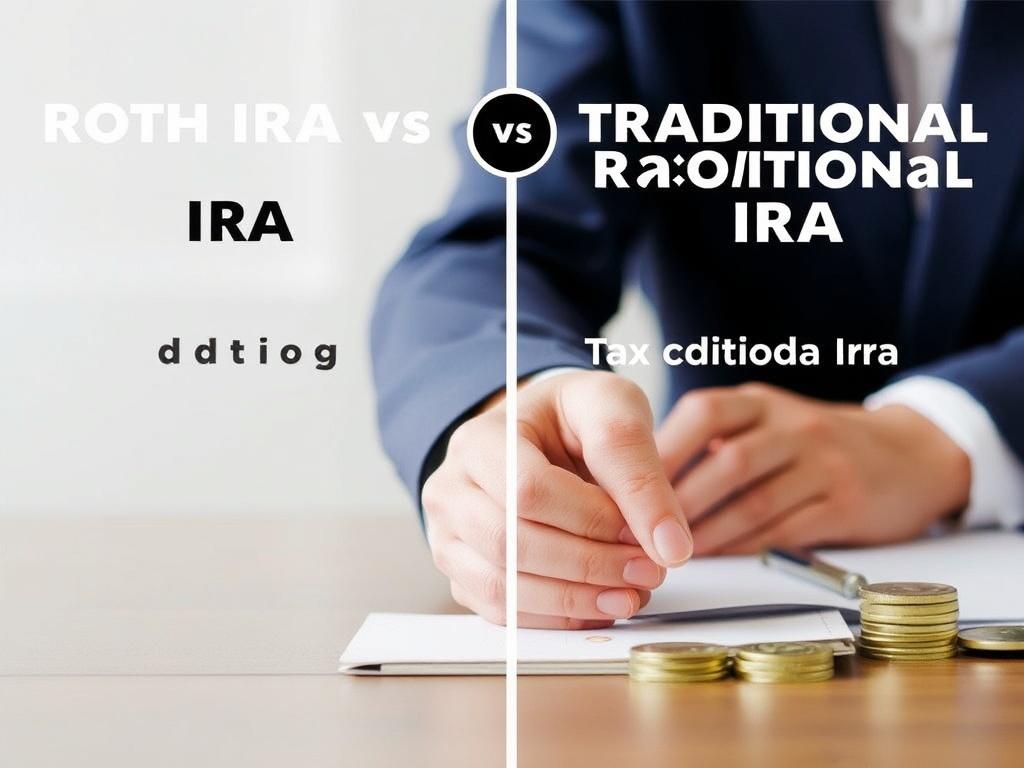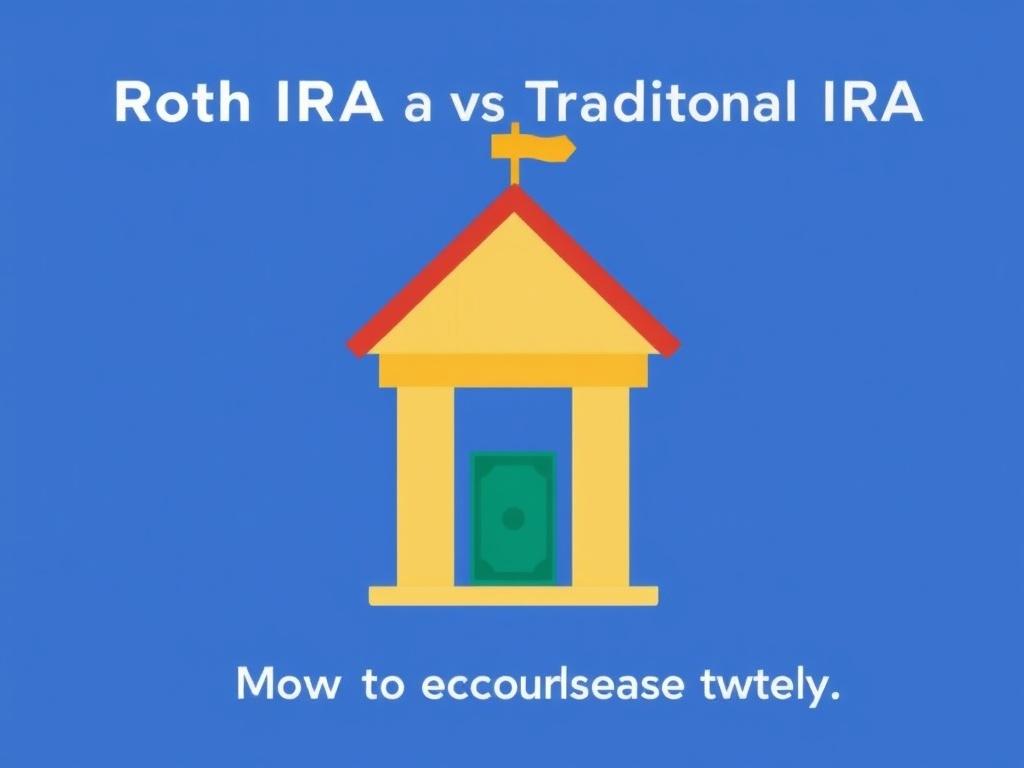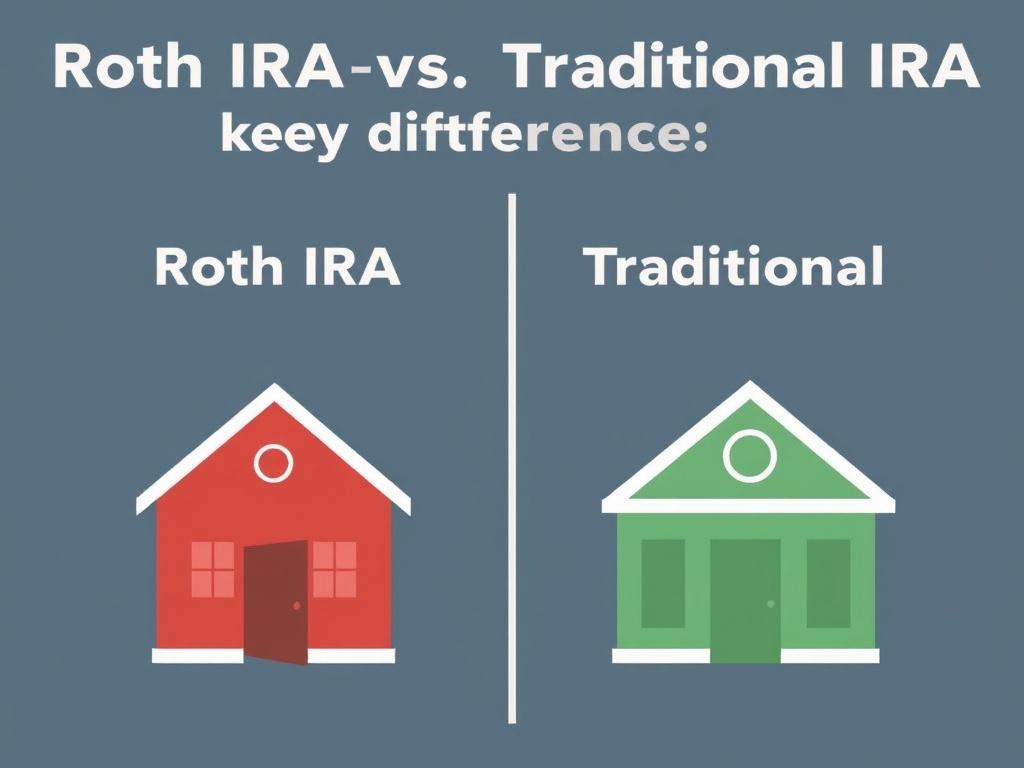SQLITE NOT INSTALLED
When it comes to planning for retirement, one of the most important decisions you’ll make involves choosing the right type of Individual Retirement Account (IRA). Two of the most popular options are the Roth IRA and the Traditional IRA. Both offer unique benefits and drawbacks, so understanding the differences can help you decide which one aligns best with your financial goals. Whether you’re just starting to save or looking to optimize your current retirement strategy, grasping the nuances between Roth IRA vs. Traditional IRA is essential. Let’s dive into what sets these accounts apart and how you can leverage them to build a secure financial future.
Содержание
Understanding What an IRA Is
Before we explore the Roth IRA vs. Traditional IRA debate, let’s briefly explain what an IRA is. An Individual Retirement Account (IRA) is a tax-advantaged savings account designed to help individuals save for retirement. The government encourages retirement savings by providing tax breaks on the money you contribute or withdraw, depending on the type of IRA.
Both Roth and Traditional IRAs provide the benefit of tax advantages, but they differ significantly in when and how those taxes apply. The tax element often plays a key role in deciding which IRA will work better for your specific situation.
Tax Treatment: Roth IRA vs. Traditional IRA

One of the biggest distinctions between a Roth IRA and a Traditional IRA centers around taxes — namely, when you pay them.
Traditional IRA Tax Benefits
With a Traditional IRA, your contributions are typically tax-deductible in the year you make them, depending on your income and whether you or your spouse participate in a workplace retirement plan. This means you can lower your taxable income today by contributing to a Traditional IRA. The money then grows tax-deferred until you withdraw it in retirement. When you take distributions, typically after age 59½, those withdrawals are taxed as ordinary income.
Roth IRA Tax Benefits
In contrast, contributions to a Roth IRA are made with after-tax dollars. This means you do not get a tax deduction the year you contribute. However, the key advantage is that qualified withdrawals in retirement are completely tax-free, including any investment earnings. This is a huge benefit if you expect to be in a higher tax bracket in retirement or want tax certainty on your future income.
Summary of Tax Differences
| Feature | Traditional IRA | Roth IRA |
|---|---|---|
| Tax on Contributions | Potentially tax-deductible | Made with after-tax dollars (not deductible) |
| Tax on Withdrawals | Taxed as ordinary income | Tax-free if qualified |
| Tax on Earnings | Tax-deferred | Tax-free if qualified |
Understanding the tax treatment is crucial because it influences how much money you have at your disposal now versus during retirement.
Contribution Limits and Eligibility
Both Roth IRA vs. Traditional IRA accounts have annual contribution limits set by the IRS, and these limits are the same for both types of accounts. For 2024, the maximum contribution amount is $6,500 if you are under age 50, and $7,500 if you are 50 or older thanks to a catch-up contribution provision.
However, income limits impact who can contribute directly to a Roth IRA, while Traditional IRAs generally allow anyone with earned income to contribute.
Roth IRA Income Limits
Your ability to contribute to a Roth IRA phases out at higher income levels. For single filers, the phase-out happens between $146,000 and $161,000 of modified adjusted gross income (MAGI) in 2024. For married couples filing jointly, the range is $230,000 to $240,000. If your income exceeds these thresholds, either you cannot contribute directly to a Roth IRA or your contribution limit will be reduced.
Traditional IRA Income Limits for Deductibility
Anyone with earned income can contribute to a Traditional IRA, but whether those contributions are tax-deductible depends on income and whether you or your spouse have access to a workplace retirement plan. Here’s a simple overview:
- If neither you nor your spouse has a retirement plan at work, your Traditional IRA contributions are fully deductible regardless of income.
- If you do have a retirement plan at work, the deductibility phases out between $73,000 and $83,000 for single filers in 2024.
- For married couples filing jointly, the phase-out range is $116,000 to $136,000 if the spouse making the contribution is covered by a workplace plan.
Contribution Eligibility Table
| Account Type | Income Limits | Contribution Allowed? | Tax Deductible? |
|---|---|---|---|
| Roth IRA | Up to $146k single / $230k married (MAGI) | Yes, if below limits | No |
| Traditional IRA | No limits to contribute | Yes | Depends on income and workplace plan |
Withdrawal Rules and Required Minimum Distributions (RMDs)
Roth IRA vs. Traditional IRA also differ in how and when you can withdraw money, especially concerning required minimum distributions (RMDs).
Traditional IRA Withdrawal Rules
For a Traditional IRA, you generally cannot withdraw funds without penalty until age 59½, although there are some exceptions like first-time home purchases, education expenses, or certain medical expenses. If you withdraw early, you usually face a 10% penalty tax plus income tax on the amount withdrawn.
Once you hit age 73 (for those turning 72 after 2023), the IRS mandates required minimum distributions (RMDs). This means you have to start taking out a certain minimum amount each year and pay income taxes on it. Failing to take RMDs can result in steep tax penalties.
Roth IRA Withdrawal Rules
By contrast, Roth IRAs do not require you to take RMDs during your lifetime. This makes them a powerful tool for estate planning or if you want to leave funds invested for as long as possible. You can withdraw your original contributions at any time tax and penalty-free since these contributions were already taxed. However, to withdraw earnings tax-free, you generally need to be at least 59½ and have had the account for five years.
Withdrawal and RMD Comparison Table
| Feature | Traditional IRA | Roth IRA |
|---|---|---|
| Penalty-Free Withdrawals | After age 59½ (with exceptions) | Contributions anytime, earnings after 59½ and 5 years |
| Required Minimum Distributions | Starting at age 73 | No RMDs during owner’s lifetime |
| Early Withdrawal Penalty | 10% plus taxes if under age 59½ | 10% on earnings if under 59½ and no exceptions |
Which One Is Right for You? Factors to Consider
Choosing between a Roth IRA vs. Traditional IRA depends heavily on your current financial situation, your expectations for retirement, and your tax outlook. Here are some key factors to help guide your decision:
1. Current vs. Future Tax Bracket
If you expect to be in a higher tax bracket in retirement compared to now, a Roth IRA might make more sense because you pay taxes upfront at a lower rate and enjoy tax-free withdrawals later. Conversely, if you believe your tax rate will be lower in retirement, a Traditional IRA may provide bigger upfront tax savings and reduce taxes during retirement distributions.
2. Need for Tax Deduction Now
Traditional IRAs offer immediate tax deductions that can help reduce your taxable income today, which may be beneficial if you want to lower your tax bill right away. A Roth IRA offers no current deduction but the benefit of tax-free income later.
3. Flexibility with Withdrawals
Roth IRAs provide more flexibility because you can withdraw your contributions anytime without penalties or taxes. This makes them a good choice if you want the option to use money before retirement without facing steep penalties.
4. Estate Planning Goals
Because Roth IRAs have no required minimum distributions during your lifetime, they can be a valuable vehicle for passing wealth to heirs. Traditional IRAs require RMDs that may increase your taxable income.
5. Income Level and Eligibility
Income limits may restrict your ability to contribute directly to a Roth IRA, although Roth conversions exist that allow higher earners to move money from a Traditional IRA to a Roth. Traditional IRAs offer broader eligibility but may have limiting deductions.
Decision-Making Checklist
- Do you want upfront tax deductions? Consider Traditional IRA.
- Do you expect your tax rate to increase? Roth IRA might be better.
- Need flexible withdrawal options before retirement? Roth IRA is beneficial.
- Concerned about estate planning? Roth IRA offers advantages.
- Check income eligibility for Roth IRA before deciding.
Combining Both: Backdoor Roth and Other Strategies
If your income disqualifies you from a direct Roth IRA contribution but you like the benefits, there’s a strategy called the “Backdoor Roth IRA.” This technique involves making a non-deductible contribution to a Traditional IRA and then converting it to a Roth IRA. Many high-income earners use this strategy to enjoy Roth benefits.
Additionally, some investors choose to contribute to both Roth and Traditional IRAs, diversifying their tax exposure in retirement. This approach can provide maximum flexibility.
Benefits of Combining Accounts
- Tax diversification in retirement income.
- More options to manage tax liability.
- Flexibility to withdraw from either account based on tax situations.
Common Mistakes to Avoid
It’s easy to get tripped up when choosing between Roth IRA vs. Traditional IRA. Avoid these pitfalls:
- Ignoring income limits and contributions restrictions.
- Not understanding the impact of RMDs on Traditional IRAs.
- Failing to consider future tax scenarios when making decisions.
- Assuming Roth IRAs are always better without considering current tax needs.
- Missing out on the potential benefits of a Backdoor Roth IRA.
Final Thoughts: How to Choose Wisely

Ultimately, the choice between a Roth IRA and Traditional IRA boils down to your unique financial profile and retirement goals. Both accounts are powerful tools to supplement your retirement savings and reduce your tax burden in different ways. If you are unsure how to proceed, consider consulting with a financial advisor who can analyze your specific situation and recommend the best path forward.
Conclusion

Understanding the key differences between Roth IRA vs. Traditional IRA is crucial for building a solid retirement plan. The primary distinction lies in the timing of tax advantages: Traditional IRAs offer tax deductions upfront but require taxable distributions later, while Roth IRAs require after-tax contributions but provide tax-free withdrawals. Assess your current taxable income, expected retirement tax bracket, eligibility, and withdrawal flexibility when making your choice. Remember, you’re not limited to choosing just one type—combining or converting accounts can offer greater control and diversification. By taking the time to understand each option thoroughly, you can choose the retirement savings vehicle that best fits your financial future and ensure your golden years are truly golden.
Опубликовано: 23 July 2025 Кредитрон – блог о кредитах, финансах и прочих реверансах
Кредитрон – блог о кредитах, финансах и прочих реверансах

